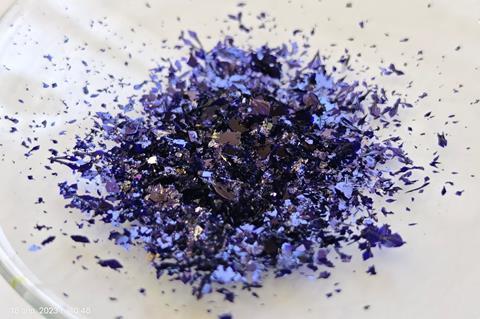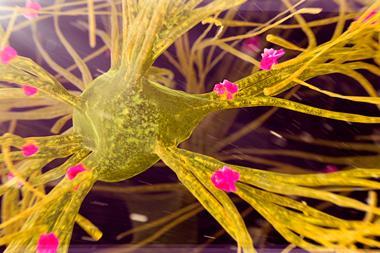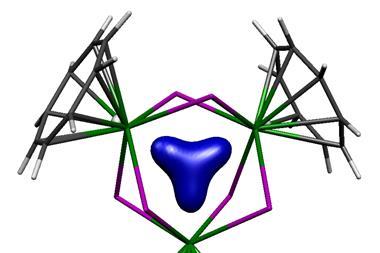Researchers have unravelled the reason azulene breaks a key fluorescence rule: the molecule’s switch to anti-aromaticity and back to aromaticity in its excited states.
Azulene is an aromatic molecule consisting of a fused seven-membered and five-membered ring. It’s an isomer of naphthalene (two fused six-membered rings) and even smells similar, but unlike colourless naphthalene it is dark blue. And it doesn’t obey Kasha’s rule, the principle that governs how molecules fluoresce.
According to the rule, fluorescence emission in molecular systems always comes from the first, lowest excited state. All higher excited states tend to be too short-lived for photon emission. Kasha’s rule says ‘that it doesn’t really matter to which excited state you excite the molecule, because it will always fall down to the lowest excited state and from there, it has a long enough lifetime to emit photons’, explains photochemist Tomáš Slanina from the Czech Academy of Sciences.
Azulene, however, emits exclusively from the second excited state instead of the first. This anti-Kasha behaviour can’t be quelled by altering the molecule’s structure through annulation (attaching a benzene ring so that it shares a bond with one of the azulene rings) or attachment of, for example, bromine substituents.

For a long time, it was unclear why azulene’s structure made it a robust rule-breaker. ‘Azulene on its own is a very simple compound – there’s virtually nothing there that should make it different from, for example, naphthalene,’ says David Dunlop from the Czech Academy of Sciences. Dunlop was part of a team, led by Slanina and Henrik Ottosson at Uppsala University, Sweden, that felt azulene’s behaviour must have something to do with its aromaticity.
In theoretical calculations, the team discovered that azulene’s second excited state is stabilised by its aromaticity. Although excited-state aromaticity is ‘quite a fuzzy subject’, Dunlop admits, azulene’s second excited state looks remarkably similar to its ground state. In both cases, the molecule’s aromaticity originates mostly from electron delocalisation along its 10-carbon-atom perimeter. Conversely, azulene’s first excited state is anti-aromatic and prone to quickly escape to the aromatic ground state.
A similar flip-flopping between anti-aromaticity in the first and back to aromaticity in the second excited state is also seen in benzene, explains Judy Wu, an organic chemist at the University of Houston, US. The study, she says, solves one puzzle as well as giving researchers a starting point to investigate other Kasha-rule-breaking molecules such as benzopyrene. ‘Trying to understand whether or not this changing of aromaticity to anti-aromaticity to aromaticity plays a role in other types of azulene-like anti-Kasha molecules could be quite interesting,’ she says. Slanina agrees: ‘We are now working on a project of analogues of azulene that have different heteroatoms.’
Understanding the fundamental causes of anti-Kasha behaviour could also help chemists design molecules that ‘can somehow handle the excitation light energy in a better way’, says Slanina. The input energy that anti-Kasha fluorophores preserve in their higher excited state could then be transferred and used elsewhere, he explains.
Fundamentally, understanding the limits of rules such as Kasha’s ‘give you a ground to imagine possibilities’, Wu says. ‘Even if rules are wrong, they are helpful in imagining new experiments.’
References
D Dunlop et al, J. Am. Chem. Soc., 2023, 145, 21569 (DOI: 10.1021/jacs.3c07625)


















No comments yet